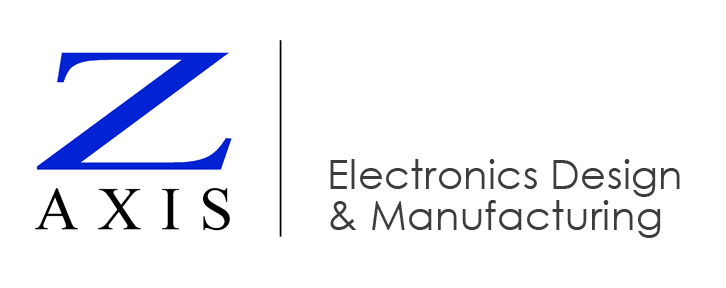This video presents a quick overview of laser depaneling and other PCB depaneling methods. It demonstrates some of the tools and methods that Z-AXIS uses for depaneling at our Made in USA manufacturing facility, including our UV laser for small, precision-cut boards with components close to the edge.
PCBA and Array Drawings
Printed circuit boards (PCBs) are typically fabricated in arrays. Then, after the go through the PCB assembly process, the individual boards are separated or depaneled, either via laser depaneling or other methods. For the electronic designer, this means that once you complete the board layout, you need to create an array drawing. By fitting as many boards as possible into a standard panel, you can help to minimize material costs. However, you also need to consider the manufacturing costs involved.
If your electronic contract manufacturer has an in-house engineering department, we recommend asking for help with this. At Z-AXIS, our design engineers can create the array drawing for you – whether you’ve done your own design and layout or used our services for it. Our design engineers will then work with our manufacturing engineers to determine the best depaneling process for your design (including laser depaneling) and create the array drawing accordingly.
PCB Depaneling Tools and Methods
Let’s look at some of the different depaneling tools and method that we use at Z-AXIS. For rectangular boards, the PCB panels typically have a V-Score where the boards will be separated after assembly. But you can’t just snap it along the score, because stresses in the board as you bend it can damage SMT components.
At Z-AXIS, we use specialized tools to separate the boards with less bending stress. One of these tools is a guillotine. We use it for thin boards. Another depaneling machine, often called a pizza cutter, is used for thicker boards. Curves and other shapes will come pre-routed, with tabs or perforations. The boards can be depaneled using a punch, which is tooled to fit the board design. A hook tool is used for separating at the tabs. It leaves “mouse bites” that may need to be sanded off, however.
Some electronic contract manufacturers use a mechanical router, which creates less strain but more vibration stress – and a lot of dust. All of these methods do cause some mechanical stress on the board, and require that parts be kept a safe distance away from the edge to avoid damage. Ceramic capacitors are particularly susceptible to cracking, as are end caps on resistors.
Laser Depaneling Advantages
A newer method for depaneling eliminates this issue altogether. The UV laser that you’ll see in our video cuts PCBs with zero mechanical stress. Laser depaneling makes extremely narrow, very precise cuts in any shape. Laser depaneling also lets us hold very tight tolerances on the finished assembly size. They’re much tighter than you can get with a pre-routed panel. This is a big advantage when the exact board size is critical to the finished product, which we are seeing more often as boards go into smaller and smaller products.
Laser cutting, or depaneling, also allows components to be placed much closer to the edge of board. This helps you to maximize the use of board space in very small PCB assemblies. By understanding the different PCB depaneling methods that are available, you can work with your electronic contract manufacturer to create an array drawing for the depaneling method that will give you high reliability, low material cost, and the right balance of throughput, manufacturing cost, and precision.
